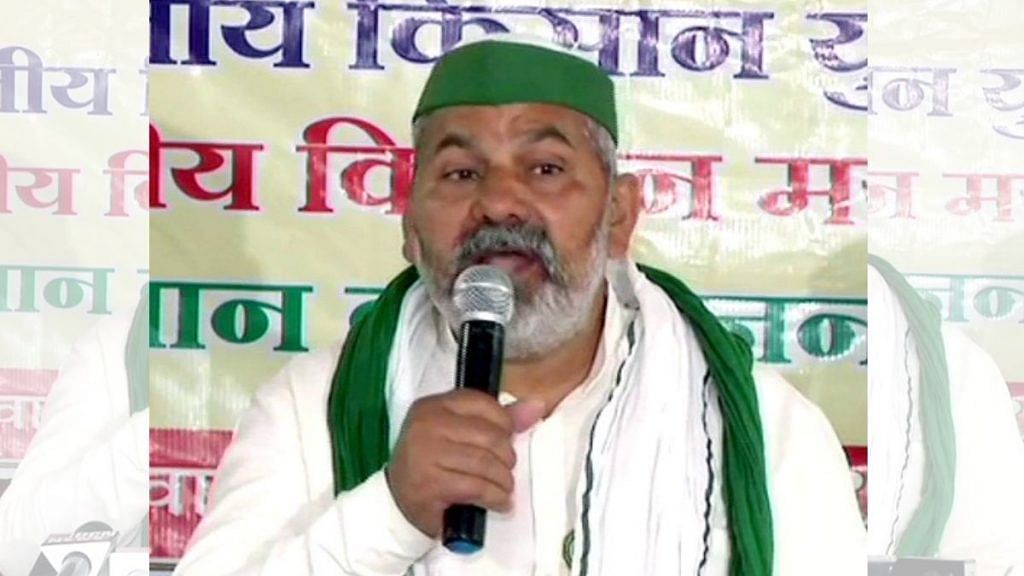New Delhi: Bharatiya Kisan Union (BKU) leader Rakesh Tikait broke down on national television at a time the farmers’ agitation against the Centre’s farm bills appeared to be dwindling following the events of 26 January.
But the BKU-bred Jat leader’s emotional appeal to farmers was strong enough to rekindle the farmers’ movement.
In episode 672 of Cut the Clutter, ThePrint’s Editor-in-Chief Shekhar Gupta traces the rise of the Jat community — right from the Nehruvian times to the Modi era.
Explaining the demographic spread of Jats in the country, Gupta said, “As per the projections of the caste census of 1931, about three-and-half crore Jats live in the country. Most of them are concentrated in the northern part of India in the states of Uttar Pradesh, Haryana, Rajasthan and Punjab. Of this, about 50 per cent of the Jats are Hindu, 20 per cent Sikh and 35 per cent are Muslims. Hence, there is not only the matter of caste, but religion as well.”
“While most people may associate Jats with Haryana, the maximum number of Jats live in Rajasthan. If you remove the SC\ST population of the state, the population of Jat caste group is about 12 per cent”, he added.
Jats in the states that they have resided, have always “punched above their weight” and been in a position of power — which is why the ruling parties try to appease the community to increase their voter base.
Gupta opined, “Jats have always had an autonomous mindset when it comes to politics. Take the example of Devi Lal in Haryana and Bansi Lal, who rose within the Congress, Charan Singh who rose to power in Rajasthan, and now their third or fourth generations are in power.”
Also read: Farmers angry about R-Day violence, says RSS affiliate, seeks action against protesters
‘Anger of Jat farmers rooted in deeper politics’
The Jats have also given India a prime minister — Charan Singh.
Gupta said that Charan Singh may have been in power for a short time, but he was powerful enough to give Indira Gandhi a tough time. His birth anniversary is observed as ‘Kisan Divas’ or ‘Farmers Day’ in India and his burial spot is known as ‘Kisan Ghat’.
Although the Jats have lost this autonomy under the current government, the BJP has been making efforts to appease them since the Advani-Vajpayee times.
Explaining this, Gupta said, “They brought in Dara Singh as president of All India Jat Maha Sabha and made him a Member of Parliament. Then they brought in Dharmendra, they are both Jat Sikhs from Punjab.”
Talking about the Jats in the current Modi government, he said, “While Modi won all ten seats in Haryana, he had only two Jats in his team — one is Vijendra Singh from Hisar and Dharam Vir from Bhiwani. About 25 seats in western UP have Jat votes, but the party has only 5 Jat MPs in the region. One of them is Hema Malini, a Jat bahu who managed to defeat Jayant Singh.”
So if one were to ask Jat ko gussa kyun aata hai (Why do Jats get angry), Gupta said, “Jats have become so powerless and disenfranchised that they think that this fight will give them power. Historically too, agriculture has been associated with the Jats.”
Concluding the episode, Gupta said, “The story of the Tikait dynasty is an example of how although scattered, but powerful these Jat leaders are. The anger of Jat farmers is rooted in deeper politics and the cause in the deepest politics is a feeling of a loss of political power or political dominance in their own pocket boroughs.”
Watch the full CTC here:
Also read: Clashes break out at farmers’ protest site at Singhu, SHO attacked with sword
